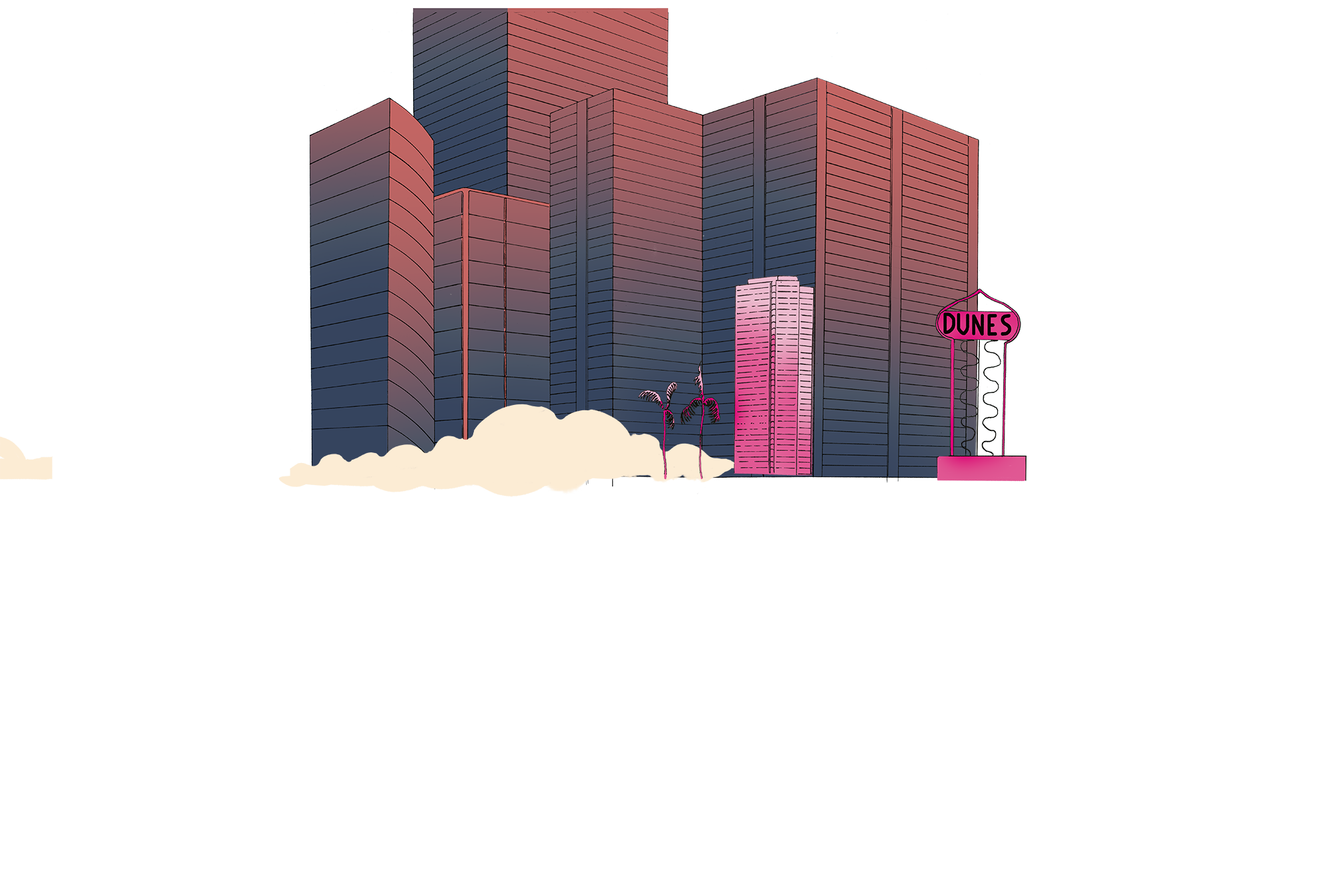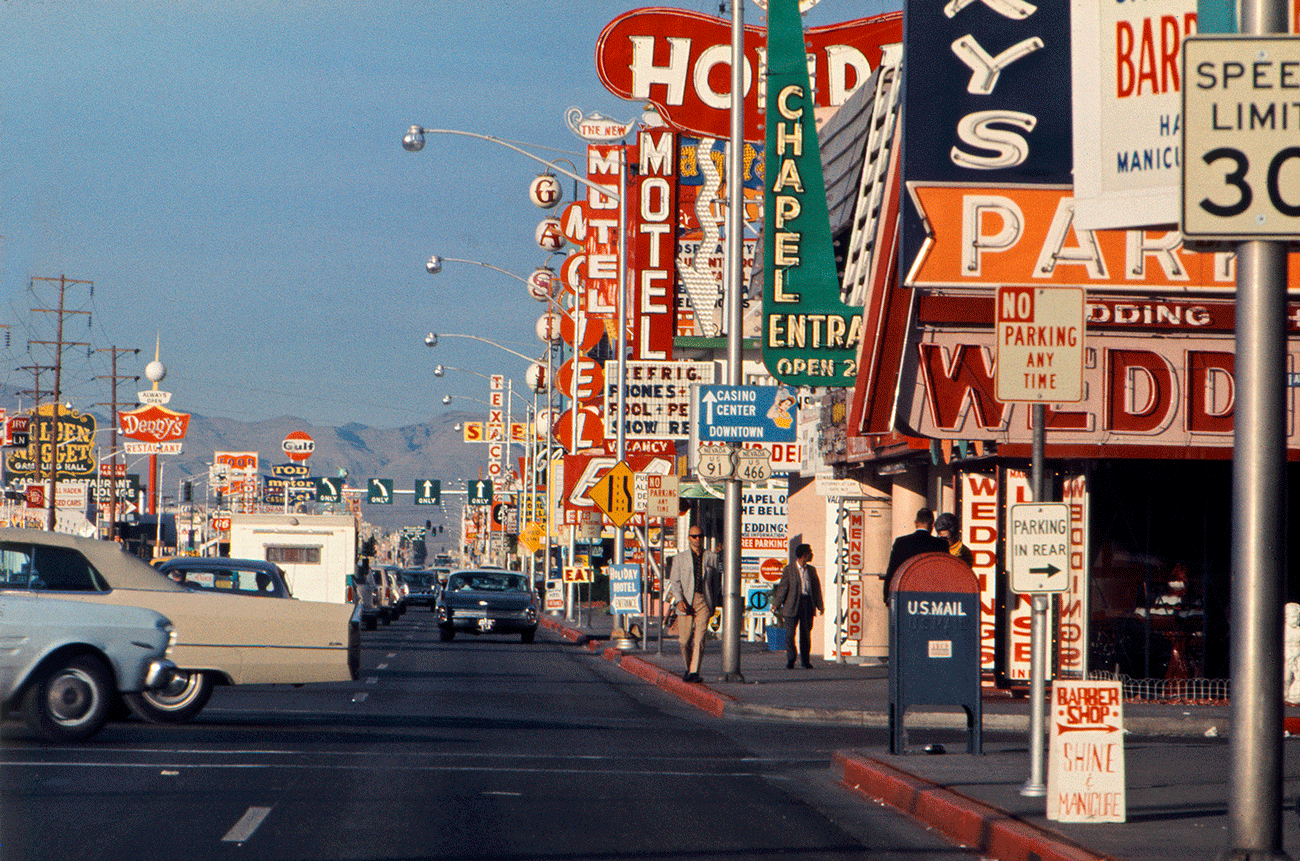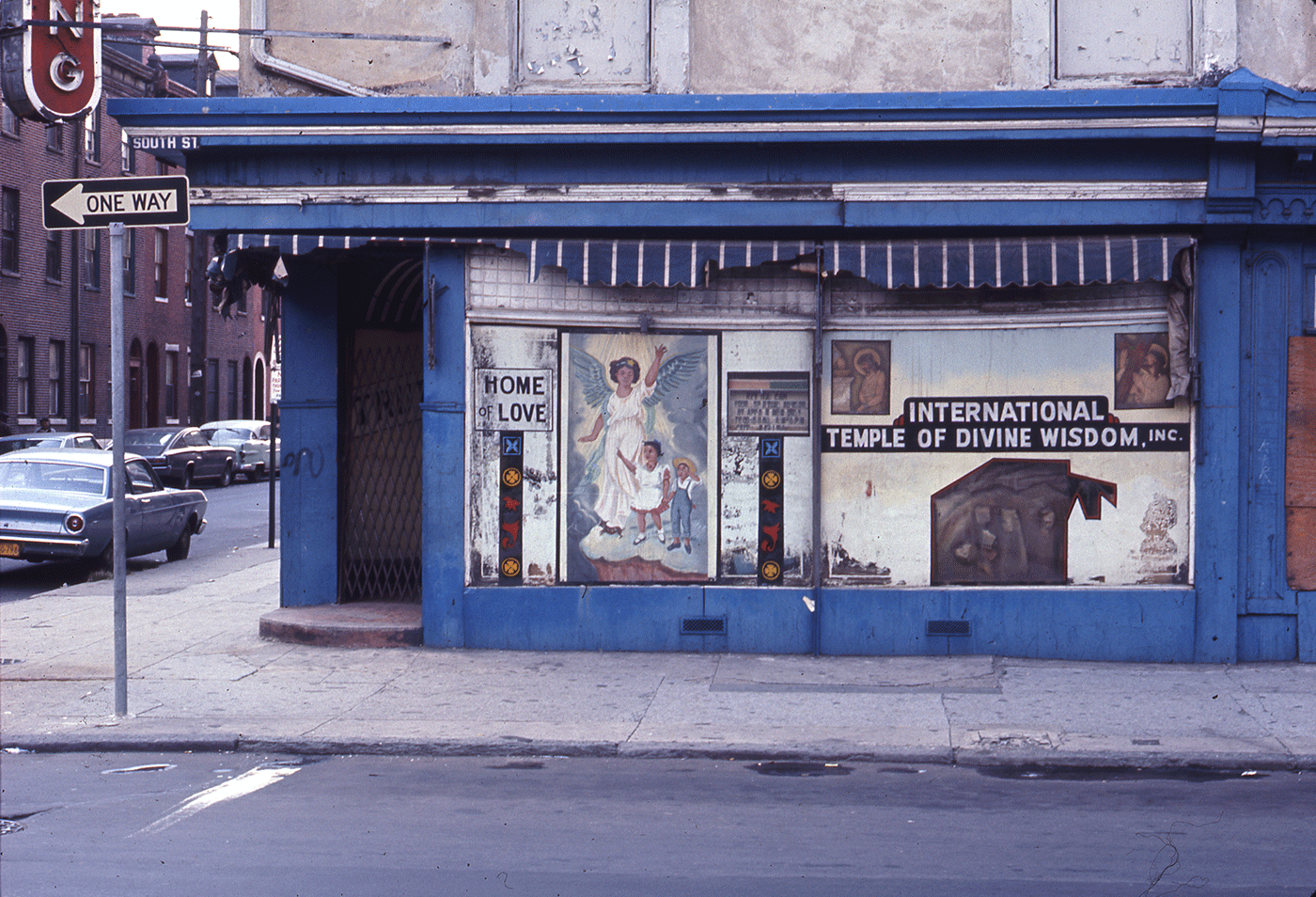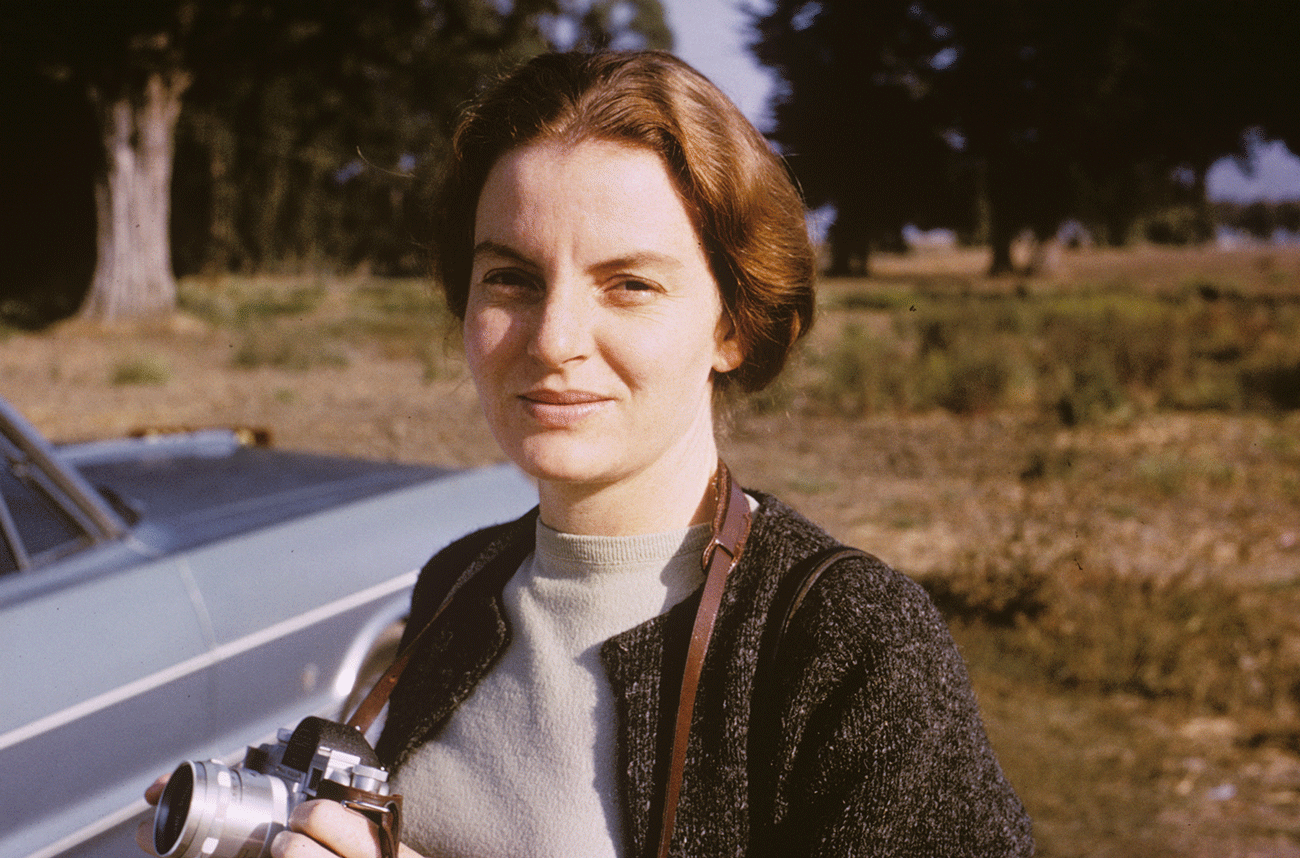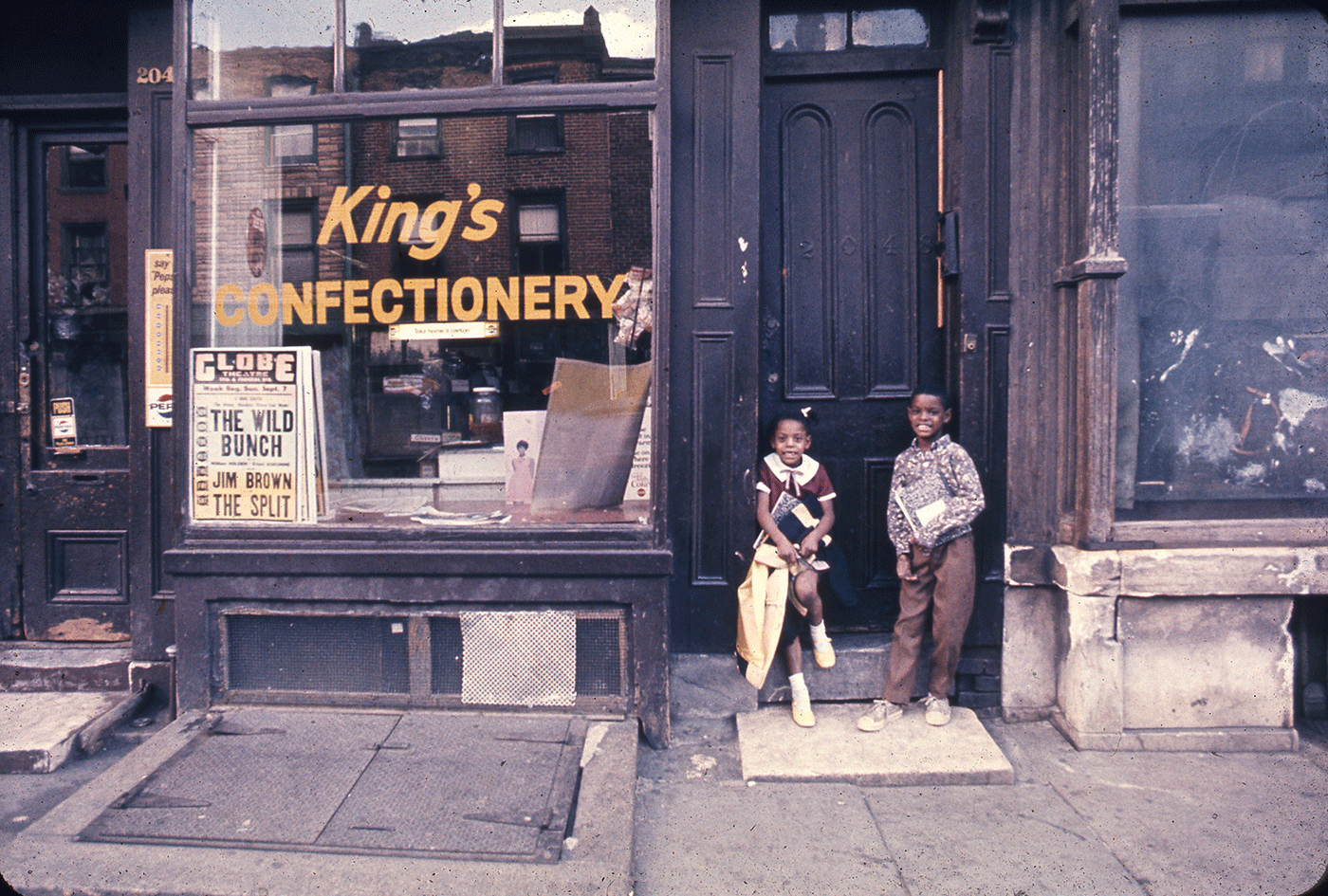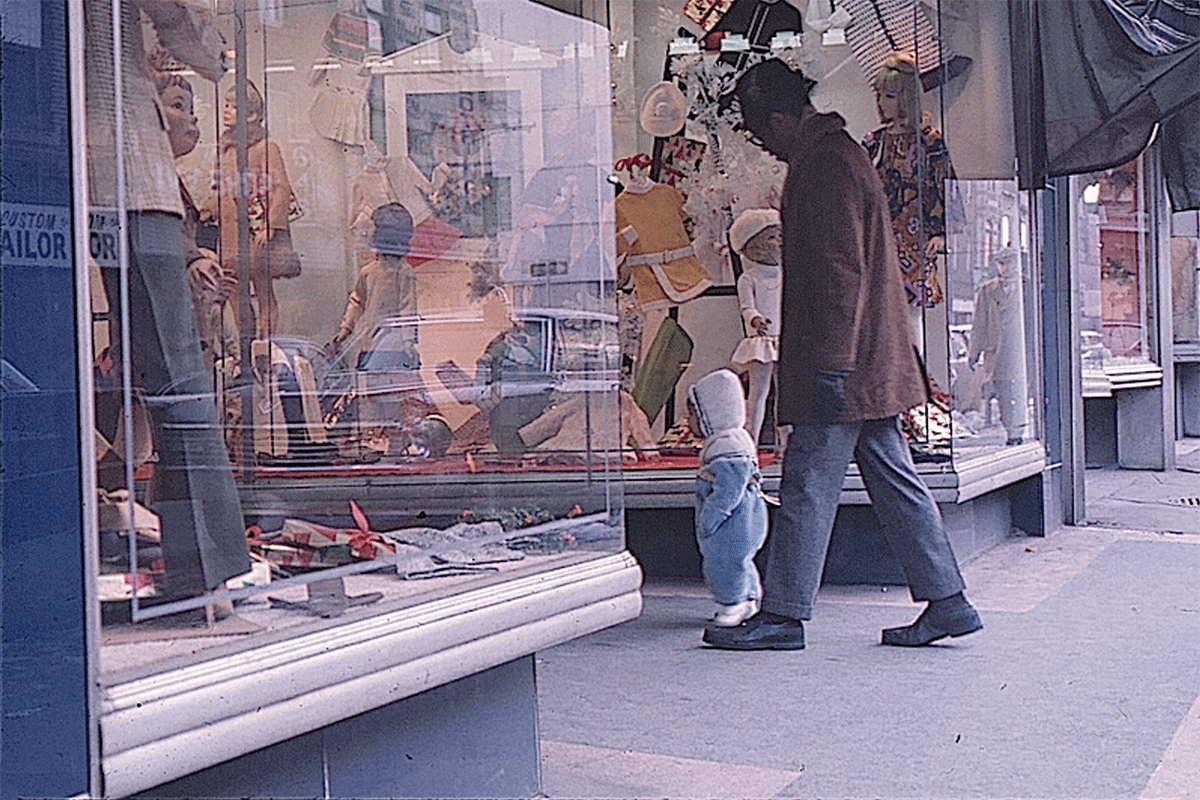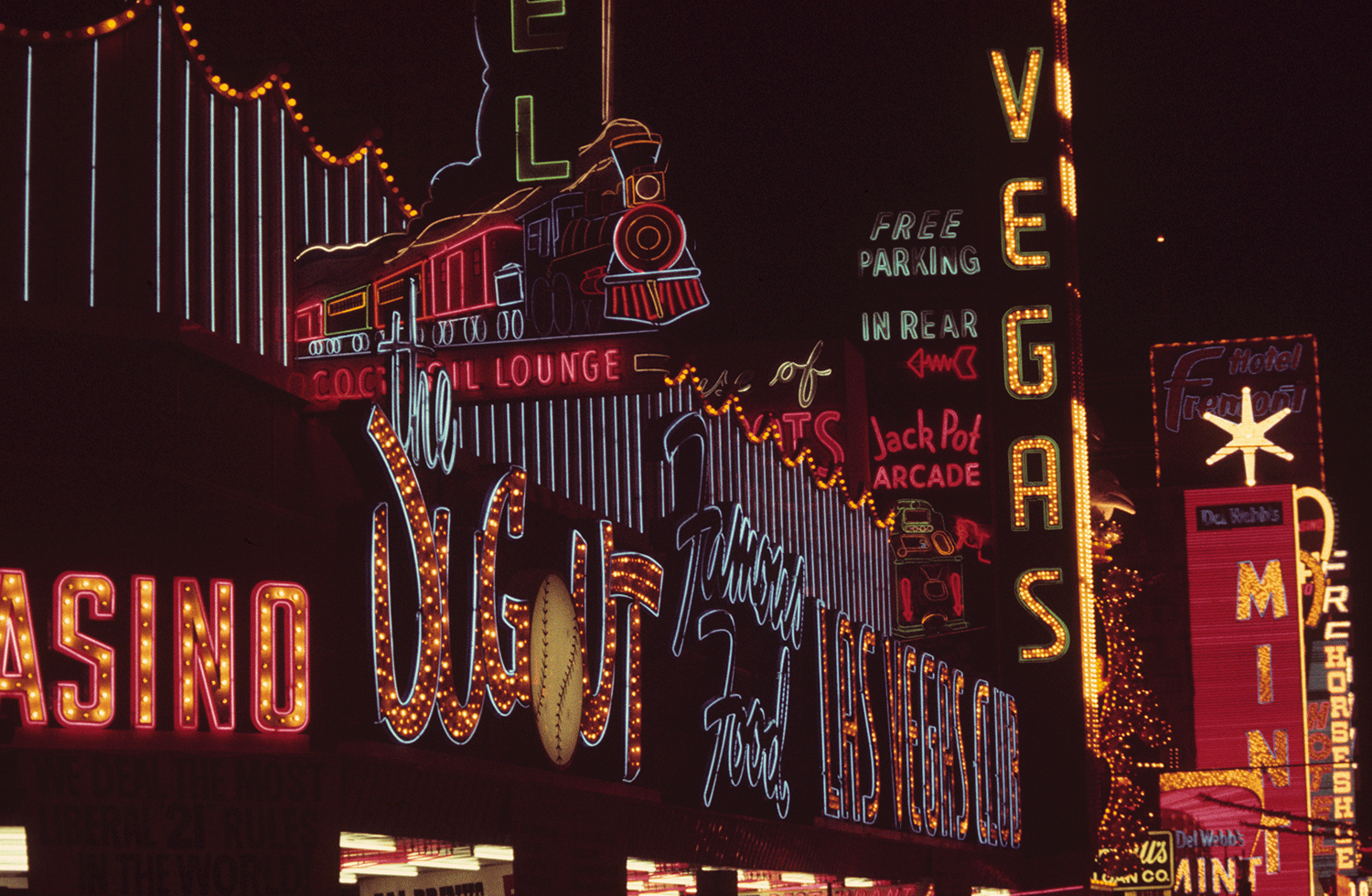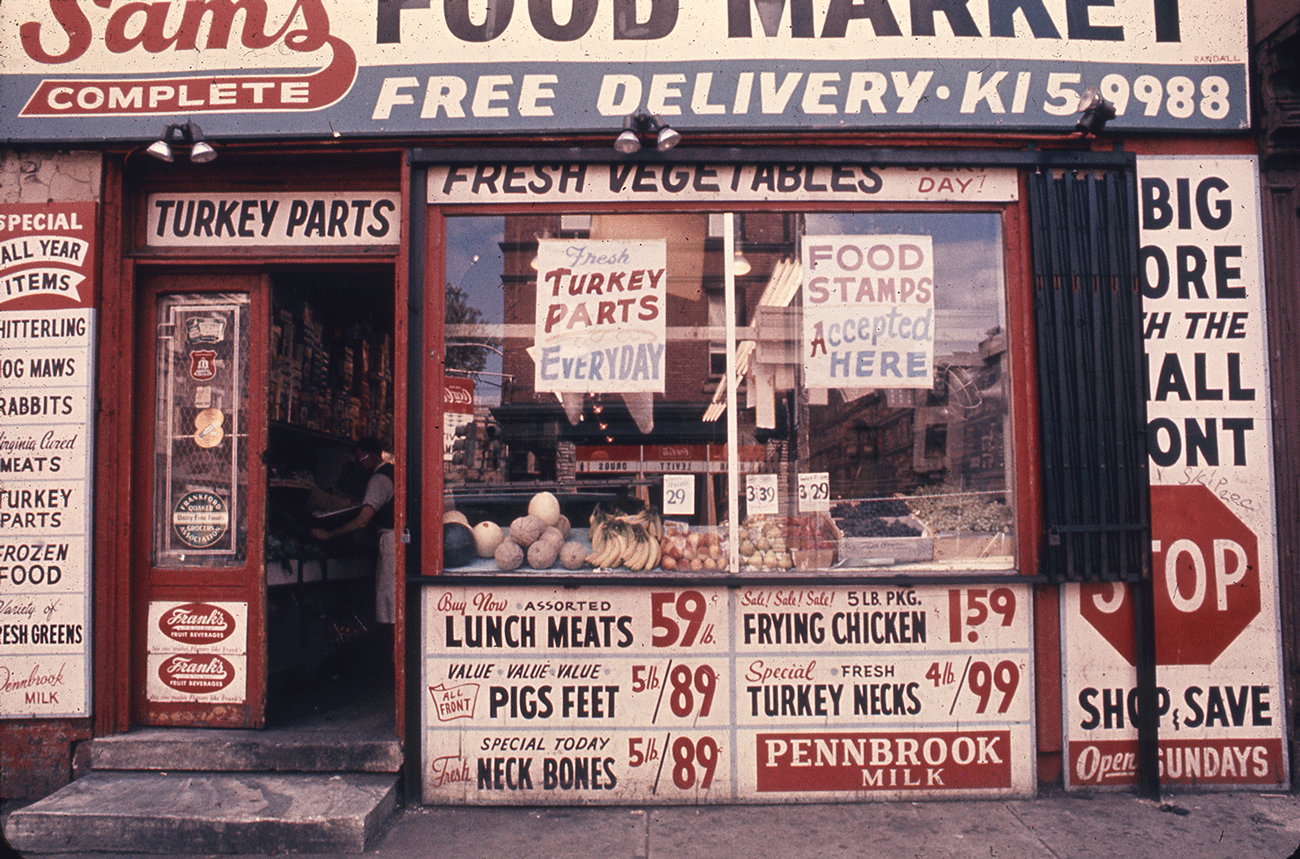Star System
October 1st, 2021 | Issue one hundred thirty-seven
For her last major work, architecture’s grande dame Denise Scott Brown is going solo.
It was the fall of 1966, as the Las Vegas Strip was just beginning to sparkle and sprawl, when a young architect and planning professor by the name of Denise Scott Brown invited her friend Robert Venturi on a weekend road trip to the desert. The pair rented a car in Los Angeles, where Scott Brown was teaching urban design at UCLA, and drove east toward Nevada. As the Strip’s burgeoning silhouette came into view, Scott Brown, who carried a camera everywhere she went, had a sudden vision. Three structures jutted up from the landscape in the distance: the Dunes hotel and casino, all glass and crisp angles; the Dunes’ enormous spade-shaped sign, almost as tall as the casino itself; and a lone, rugged-looking chimney. They pulled over alongside a gravelly, cactus-y patch of ground and Scott Brown styled a pair of photographs. She positioned Venturi, dressed in a boxy suit, with his back to the camera and to the right of the three structures. Click. Then she gave Venturi her camera and placed herself in the foreground of the same three structures, facing the lens, hands on hips and legs wide, smiling like a Cheshire cat.
Click.
She had already been to Vegas a few times by herself, drawn to its neon and billboards, guided by her instinct to pay attention to city spaces overlooked, and looked down on, by her peers. Scott Brown thought Vegas was fun—unlike a lot of modern design at that time—and she wanted to capture this sense of delight. So she played with distance and scale in the camera lens and styled Venturi to look like a fourth “tower” on the skyline, and herself like a triumphant skyline conqueror.
Scott Brown and Venturi married eight months after that road trip, at a ceremony on the front porch of Scott Brown’s bungalow in Santa Monica. Five years after that, they copublished Learning from Las Vegas, one of the most influential design books of the twentieth century. Dense, theoretical, provocative, and funny, it established the simple yet profound idea that architecture communicates. A building is not merely “a machine for living in,” as the Swiss French modernist architect Le Corbusier famously put it, but a canvas to interpret, a scene in a story. Translated into sixteen languages, and reprinted twenty-nine times to date, it remains a standard text across design and fine arts departments. Scott Brown both disagreed with and admired her early modernist predecessors, who had been obsessed with the question of architectural function, and had made an art of designing buildings to efficiently perform specific purposes, like housing a family or sheltering workers. Learning from Las Vegas’s essential insight was that communication was an architectural function too. Buildings convey meaning, which everyone reads—just as Scott Brown did on that festive, fecund desert journey, when she saw three faraway buildings and felt a sense of joy and play. She turned the Vegas skyline into a sentence in the unfolding story of her new romance.
“Las Vegas Car View of The Strip.” Photo by Denise Scott Brown, 1968
Fifty-four years later, I sat in Scott Brown’s dining room in Philadelphia, looking at these photos with her. It was sixteen months after Venturi had died at the age of ninety-three, and weeks before a global pandemic would quiet cities across the US. Scott Brown is one of architecture’s rare grande dames: she turned ninety in October 2021. But her recognition has been belated; for decades, her partnership with Venturi wasn’t acknowledged. Instead, Scott Brown witnessed, up close, what it meant to be seen as a capital-A Artist, the status afforded to Venturi, who was celebrated as one of his generation’s most brilliant architectural minds, though she was denied such a standing herself. She told me that for “The Denise”—the image of her, and the pose, that quickly became iconic in design circles—she staged herself and told Venturi where to stand with the camera and he pressed the button. “So,” she said, with both humor and edge, and not really asking, “whose picture is that?”Today, Scott Brown is at work on her seventh book, the first to feature her vast archive of photographs, most of which have never been publicly displayed. It’s titled Wayward Eye, the play on eye and I intentional. Rather than centering her famous partnership, the book tightens the spotlight on her vision, till now obscured by the attention paid to her husband. Being seen as an Artist is always the result of a fickle, fragile kind of elevation, but it matters, affecting what the market rewards, how other artists think, what powerful people argue for, maybe even how the rest of us decide we want to live. In the context of decades of creative collaboration and being passed over by the capital A, Scott Brown’s solo album creates an opportunity to know her artistry—and, also, her transgressive way of seeing cities.
Scott Brown grew up in Zambia and South Africa in the 1930s and ’40s, the daughter of Jewish immigrants from Latvia and Lithuania. Her mother, who had studied modernist architecture, encouraged her to pay attention to space and light and art. At the same time, Scott Brown was drawn to styles and compositions that pushed against the zeitgeist—a lifelong attraction. She saw neon on a childhood visit to an amusement park in Johannesburg and was enthralled. Some years later, she saw a canteen made from a repurposed Coca-Cola bottle, decorated with multicolored beads over and around the red logo’s white script. She would remember it for the rest of her life. It was a local design: red beads conveyed one message, blue another. It also exemplified the art of taking an existing thing and adding ornamentation to create something new, one that says something, if you know how to read it.
She began taking pictures as a teen, guided by photographers like Cartier-Bresson, who advised never to question in the moment why something was prompting you to raise the lens to your eye, lest you lose it. Her mantra was to photograph first and “think later.” In the ’50s, when she moved to the UK to study architecture—including with Alison and Peter Smithson, famous for their gritty, everyday brutalist style—Scott Brown started photographing London’s Main Streets, especially ordinary street signs. It was a decade later, after she had moved to Philadelphia to study and then teach city planning, that she first stopped at the Vegas Strip on a cross-country drive and felt, as she put it, “my hair stand on end, and creep along my neck and I just knew, just take it.” Photograph, then think.
At the time, the Strip was a kind of supercharged Main Street, pocked with motels and casinos and billboards. She saw Los Angeles as a like-minded cousin, but Vegas was the most extreme version of a new kind of city, one that stretched along desert roadways and sported lots of plain little buildings topped with big, bold signs. This sort of town, modest and messy, was very different from the era’s mid-century modern metropolis, which was sprouting state-of-the-art expressways and sleek glass-and-steel skyscrapers. To Scott Brown, the modernist preoccupation with singular and massive design interventions was fundamentally flawed. In her 1965 article “The Meaningful City,” she imagined a visitor entering the high walls of a medieval town: they wandered the tiny streets, passed dense rows of homes, crossed the central market square, gazed up at the big, ornate church, and deciphered the city not by focusing on any one building, but by reading and interpreting the meaningful relationships between the small and the towering, the alleyways and the streets, the courtyards and the plazas.
Her interest in context and meaning was timely: theorists like Roland Barthes and Claude Lévi-Strauss were writing about symbols and sign systems. Skepticism of the outsize modern project was fashionable too. By the early ’60s, Andy Warhol was ironizing the ordinary in his pop paintings of soup cans and Brillo pads. Joseph Heller was satirizing the American war machine in Catch-22. Anti-heroism was in the air. But looking deeply at the sprawling Vegas Strip was not—for architects, at least—an obvious move. It wasn’t seen to jibe with the nascent environmental movement. Nor did it look suitably urban. When Jane Jacobs mythologized the regular city street in her 1961 book The Death and Life of Great American Cities, she wrote about New York.
The same year that Scott Brown began formally studying the Strip, 1968, she was invited to design a commercial strip in South Philadelphia, under contract with the Citizens’ Committee to Preserve and Develop the Crosstown Community. In those years, city officials and planners and architects targeted poor and working-class, usually Black, neighborhoods and their Main Streets for demolition, to make space for tall towers and six-lane highways. Led by the housing activist Alice Lipscomb, the committee was fighting a proposed highway project set to bulldoze fourteen blocks of South Philly and displace more than six thousand mostly middle- and working-class Black residents. Lipscomb asked Scott Brown to design a future South Street, the neighborhood’s commercial corridor, without a highway running through it, to help officials see the value and meaning of the colorful storefronts and the modest homes, the flowerpots on the stoops, and the hand-drawn hopscotch courts on the streets they were prepared to erase. Scott Brown worked with residents and developed a plan that rehabilitated housing for low-income owners and renters; supported local business ownership and employment; and prioritized libraries, health centers, and schools.
“South-Street 01” Photo by Denise Scott Brown, c. 1969
Scott Brown describes her South Street design in the final section of Learning from Las Vegas. In it, she recalls a week in which she was rejected for two grants: one for the South Street project, because it was deemed “too political,” and one for the Vegas project, because it was viewed as “not socially concerned.” Modernists saw them as opposed—one worked with a community to fight a highway; the other analyzed the architecture that forms around sprawling expressways—and liked neither. But to Scott Brown, they were similarly good. They both illustrated how “beauty could emerge from the existing fabric,” she writes, and how a “not-too-apparent order should be sought from within rather than an easy one imposed from above.”
This is one of the reasons Learning from Las Vegas was so controversial when it was published. It ran up against a way of looking at cities that prized stripped-down, ordered spaces and that saw colorful or chaotic areas as lacking beauty and functionality, as ripe for either disregard or a top-down intervention involving a bulldozer. Modernists couldn’t see that chaotic streetscapes could be functional. They didn’t get that ornament is where the feeling lives.
Scott Brown and Venturi explained how architecture conveys meaning and emotion through a neat typology of ducks and decorated sheds. A building expresses its purpose, its modus operandi, in one of two ways, they observed: It embodies the form of the thing it does; the building, say, sells ducks and duck eggs and is the shape of an enormous duck. Or it is plain and sports a big sign declaring what it does; the above enterprise is a little shed with a sign depicting a duck atop it. Modernist buildings, they explained, are ducks; they are like big ornaments on the cityscape. The Vegas Strip is the land of decorated sheds, which in their assessment is a more flexible, sophisticated mode of communication. Scott Brown and Venturi claimed as a precedent for their vision the eminent Roman Forum: “Like the complex architectural accumulations of the Roman Forum, the Strip by day reads as chaos if you perceive only its form and exclude its symbolic content. The Forum, like the Strip, was a landscape of symbols with layers of meaning evident in the location of roads and buildings, buildings representing earlier buildings, and the sculpture piled all over. Formally, the Forum was an awful mess; symbolically, it was a rich mix.”
In her 1973 review of Learning from Las Vegas in The New York Review of Books, Ada Louise Huxtable wrote that the book “passes the one conclusive test of art and history: we are never going to look at the world the same way again.” The Ohio Review was equally effusive but in a panic-stricken sort of way. Learning from Las Vegas, the critic wrote, “threatens those things that we use to distinguish between us, the cultured, and them, the vulgar”—a quote Scott Brown and Venturi subsequently put on the back cover of the book’s paperback edition. In Learning from Las Vegas, Scott Brown defended the implicit politics of her work. She explained that studying Vegas and South Street had taught her that, in cities, social and aesthetic realms go together, a lesson that “most planners and many architects find hard to accept.”
“Denise Scott Brown” Photographer Unknown, 1965.
I met Scott Brown for the first time in the early aughts, when I was a graduate student interested in the history of urban renewal and her South Street design. I was curious why the Citizens’ Committee had solicited her expertise, her eye. It seemed her affection for Vegas had been part of its consideration. As she recounted in the project write-up, the committee told her: “If you can like the Las Vegas Strip, we trust you not to try to neaten up South Street at the expense of its occupants.”
She told me to come see her at her design studio at 9 a.m. on a Saturday morning, the only time she had free. Venturi answered the door, smiling and bespectacled. As he walked me down the corridor to her office, he leaned in, as if to whisper a secret. “It’s great you’re interviewing her,” he said. “People don’t pay her the attention she deserves.” I laughed awkwardly, not expecting to be praised for interviewing a famous designer. I didn’t know at that point about the erasure of her work over the years, or that she had been treated cruelly by her peers. Once I was in her office, Scott Brown recounted her collaboration with Lipscomb and the Citizens’ Committee with focus and precision; she did not stray from the assigned topic.
I would later learn that Scott Brown and Venturi first met at a faculty meeting at the University of Pennsylvania. It was 1960. Venturi was teaching part-time in architecture and thinking about opening his own firm. Scott Brown was a brand-new professor and a young widow: her first husband, Robert Scott Brown, had recently been killed in a car accident. At the faculty meeting, the dean introduced a proposal to tear down the School of Fine Arts Library for a bigger, more modern space. Scott Brown raised her hand and told the dean that he was making a mistake, arguing that the original structure should be preserved and renovated. (Ultimately, the library stayed.) Venturi approached Scott Brown after the meeting, introduced himself, and told her he agreed with her. Pleased and piqued, she responded with what would prove to be an evergreen question for them: “Well, why didn’t you say something?”
After the faculty meeting, she and Venturi became friends. When they met, he was designing a modest house for his mom, which critics would later call the world’s first postmodern building. At one and a half stories, it has a pitched roof and a double-wide chimney. Over the front door sits a slim arch, cut in half, which means it holds no weight: history’s first, and maybe only, ironic archway. A large picture window to the door’s left is countered to its right by four small windows in a horizontal row, upending the expected symmetry. As a whole, it’s a constellation of exaggerated and manipulated elements that draw attention to the legible features modernists were back then throwing by the wayside. Scott Brown loved it. As she and Venturi wrote in Learning from Las Vegas: “The familiar that is a little off has a strange and revealing power.”
They taught courses on architectural theory together and dined platonically. He was shy; she was social. They shared a dry sense of humor and an intense work ethic and liked to talk shop. Scott Brown was photographing and studying commercial strips and Main Streets, while Venturi was writing a monograph called Complexity and Contradiction in Architecture. Today, the book is canonical for its pithy critique of modernist style. “I like elements that are hybrid rather than ‘pure,’ compromising rather than ‘clean,’” Venturi wrote. “I prefer ‘both-and’ to ‘either-or.’”
They taught courses on architectural theory together and dined platonically. He was shy; she was social. They shared a dry sense of humor and an intense work ethic and liked to talk shop. Scott Brown was photographing and studying commercial strips and Main Streets, while Venturi was writing a monograph called Complexity and Contradiction in Architecture. Today, the book is canonical for its pithy critique of modernist style. “I like elements that are hybrid rather than ‘pure,’ compromising rather than ‘clean,’” Venturi wrote. “I prefer ‘both-and’ to ‘either-or.’”
“South Street 14” Photo by Denise Scott Brown, c. 1969
At the time, the iconic male visionary loomed large in the art world, and designers epitomized him—when Ayn Rand needed a profession for her hero Howard Roark in The Fountainhead, she came up with “modernist architect.” But such prejudice certainly wasn’t unique to design. Just before Learning from Las Vegas came out, Linda Nochlin published her famous article “Why Have There Been No Great Women Artists?,” investigating the structural circumstances of art production. As she wrote: “It seems probable that the answer to why there have been no great women artists lies not in the nature of individual genius or the lack of it, but in the nature of given social institutions and what they forbid or encourage in various classes or groups of individuals.” In 1968, a year after they married, Scott Brown and Venturi published their first jointly written article, in Architectural Forum, on A&P parking lots; the contributor bio noted that Denise Scott Brown “is also Mrs. Venturi.” When an acquaintance asked, “Are you an architect too?” Denise said, “No, Bob’s the ‘architect too.’ I’m the architect.”
At the time, the iconic male visionary loomed large in the art world, and designers epitomized him.
One of the most inhospitable places for them would end up being where they landed professionally as newly married partners: the acclaimed Yale School of Architecture, where Venturi had started teaching, and where they brought Scott Brown’s idea to do a studio on the Vegas Strip. The famous and wealthy modernist architect Philip Johnson—whose legacy is currently under scrutiny, given his enthusiastic support for the German Nazi party—was their colleague. When he judged a design competition for an apartment complex in Brighton Beach, Brooklyn, Johnson dismissed their firm’s entry as “a pair of very ugly buildings.” It was a set of multi-tiered, midsize towers, crafted to ensure that the maximum number of apartments had a view of the sea (only one in each building did not) and not to stand out from their surroundings. A few months later, an official in another competition called a different entry of theirs “ugly and ordinary.” Since the criticism was part of the point, they thought, they made it their own. “Ugly and Ordinary” became their tagline, their vision, contra what they labeled the “Heroic and Original” ethos of the moderns.
The renowned art historian Vincent Scully, who was a Yale colleague and an early champion of Venturi’s (he loved Complexity and Contradiction), greatly disliked this tagline. But when he expressed his displeasure to The New York Times, he did so in a way that diminished Scott Brown. “The Venturis impishly carry on about being boring and ugly. I understand why they do it, but it isn’t true,” Scully told the paper in 1971. “Bob Venturi is very much a traditional designer; he’s extremely aesthetic.” Scully didn’t even mention Scott Brown’s name.
Scott Brown and Venturi addressed the way their colleagues marginalized her, but they didn’t quite seem to understand how the marginalizing functioned. It wasn’t just about making her invisible, after all, but about associating with her the parts of their joint work that the establishment didn’t like. At the beginning of Learning from Las Vegas, in a special, single-authored note, Venturi attested to Scott Brown’s contributions: “Denise Scott Brown, my collaborator for twelve years, has been so intertwined in our joint development that it is impossible to define where her thought leaves off and mine begins,” he wrote. “We both find it painful when her work as a designer or theorist (or our shared work) is ascribed to me, as it so often is. When I try to set the record straight, I seem to play Hearst to her Marion Davies.” Venturi folded his declaration within a discussion of the virtues of collaboration more generally, diluting his specific message about her: “We look best when we stand as we are, a group of strong individuals who share enthusiasms and work well together, not as a pyramid with the figurehead of an Architect at the top.” They even made one of their students, Steve Izenour, a third coauthor on the book, a generous decision that reflected Izenour’s contributions but likely undermined Scott Brown, now poised to be aligned with the student rather than with the rising star.
In 1975, a few years after Learning from Las Vegas came out, Scott Brown wrote her own essay titled “Sexism and the Star System in Architecture,” reflecting on her negation. It contains one of the few vulnerable moments she has put to paper. The marginalizing made her feel “self-doubt and confusion,” she wrote. She would tell herself, “My husband is a better designer than I am. And I’m a pretty dull thinker,” before trying to talk herself out of such negative thinking. “The first is true, the second probably not,” she continued. “I try to counter with further questions: ‘How come, then, we work so well together capping each other’s ideas in both design and theory? If my ideas are no good, why are they praised by the critics (even though attributed to Bob)?’”
“South Street 18” Photo by Denise Scott Brown, c. 1969
The pinnacle of this splitting came in 1991, when colleagues awarded Venturi the Pritzker Architecture Prize, the preeminent award in the field. The Pritzker jury wrote that “he has expanded and redefined the limits of the art of architecture in this century, as perhaps no other has, through his theories and built works.” The citation highlighted the house he designed for his mother, as well as Complexity and Contradiction. It noted, at the end, his partnership with Scott Brown, their practice and scores of projects, and Learning from Las Vegas. Scott Brown boycotted the ceremony in protest.
Scott Brown has frequently said that she and Venturi considered refusing the award because of her exclusion but decided not to because their firm needed the accompanying hundred-thousand-dollar prize. Their practice designed award-winning museums, university halls, and civic buildings but not lucrative commercial skyscrapers. In his acceptance speech, Venturi struck a less emphatic, more wry tone than he had in his earlier front-of-the-book note—there was no big statement of protest. After listing numerous people and places to which he was indebted, Venturi said, “You will notice during this loosely chronological description I have used more and more the first-person plural, that is, ‘we’—meaning Denise and I.” He did, however, recognize her as an artist. “All my experience,” he said at the end, “would have been less than half as rich without my partnership with my fellow artist, Denise Scott Brown.”
In recent years the architectural establishment has made an effort to address and undo Scott Brown’s erasure. In 2013, Women in Design, a student-led group at the Harvard Graduate School of Design, launched a petition to add her retroactively to the Pritzker; it garnered over twenty thousand signatures from architects around the world. In 2016, the American Institute of Architects awarded both Venturi and Scott Brown its Gold Medal: they were the first couple ever to receive it. But ripples of backlash have followed. In the fall of 2016, just months after Scott Brown accepted the Gold Medal, the Museum of Modern Art in New York City held a weekend-long fiftieth-anniversary celebration for Complexity and Contradiction. The festivities included panels and tours in New York and Philadelphia, with standing-room-only crowds and wait lists. Venturi did not appear—he had been suffering from dementia for many years at that point—but Scott Brown participated in the closing session, and the weekend’s panelists mentioned her. During Friday’s Q&A, architect and author Robert A. M. Stern, then seventy-seven and a contemporary of Venturi and Scott Brown, raised his hand from the audience and said that the panel was giving her credit she didn’t deserve. He didn’t remember her having anything to do with Complexity and Contradiction, he said. The panelists, he suggested, were rewriting history.
Word of the outburst made its way back to Scott Brown, with whom I was emailing at the time, hoping to pick up where we had left off in the aughts. She was responsive to my queries, but also consistently distant. In the early spring of 2018, I wrote to her with another update, noting an upcoming appointment I had to interview Robert Stern. An hour after I clicked send, my phone rang.
“Hello,” a smooth, steady voice said on the other end. “This is Denise Scott Brown.” A few weeks later, she invited me to lunch.
For nearly fifty years, Scott Brown has lived in a two-story art nouveau beauty at the end of a narrow residential street in Chestnut Hill, a neighborhood on the northwestern edge of Philadelphia. It’s stately but not fussy. On the day of my visit, some peeling paint decorated the second-story balcony; the old stone fountain out front, surrounded by a gravel driveway, was not working. At the front door, a household organizer led me into the roomy, natural-light-filled foyer, where, against one wall, a dark wood bench provided a seat for a life-size doll wearing a crisp checkered dress, clutching a bouquet of fake flowers. If the doll had spoken, she might have said: Welcome to my cluttered, curated home; please look first and think later.
In the living room, connected to the foyer, the walls were covered in earth-toned, big-flowered wallpaper, a replica of the print Scott Brown and Venturi created for Best department stores in the early ’80s. Miniature models of the chair they designed for Knoll, pink-and-yellow-flecked, stood or lay askew on a few side tables, like forgotten dollhouse furniture. Atop stacks of books on the room’s large, round coffee table were three old soda cans, their rims threaded with rust: they were “decorative Cokes.” On the rack of a piano in the corner, two copies of Learning from Las Vegas took the place of sheet music, each opened to one of the skyline shots they took of themselves.
As we settled on the sofa, Aalto, an eight-year-old English springer spaniel named for the Finnish architect Alvar Aalto, sat at our feet. “On occasion I call him Aalto-y or Otto-y,” Scott Brown said, “but mostly I call him Poochela, which is ‘Pooch’ with a Yiddish ending.”
She was chattier and more digressive than she had been in the aughts, but still directed. She recalled her childhood in South Africa during World War II, and then, a few years later, during apartheid, when she was hyperaware of being both white and Jewish. “I’m being a white oppressor, as well as being bullied in my school for being Jewish,” she said.
Photography offered Scott Brown the possibility to reach into and stretch beyond the thorny barriers of the time, and she was eager to show me the images she was preparing for Wayward Eye, nearly all of which had sat boxed up and out of sight in her closet for five decades. She largely stopped photographing after her son, Jimmy, was born, in 1971, which was also when Learning from Las Vegas was being published and she began to receive more negative attention from her peers—and, in turn, when she and Venturi decided to devote less time to writing and more time to their firm. Learning from Las Vegas brought them “disciples,” Scott Brown said, but not work.
“Las Vegas” Photo by Denise Scott Brown, c. late 1960s
On a dark wood table in the dining room, which was connected to the living room, a computer and two large monitors were set up to display her photographic layouts, and after lunch, we turned to the screens. Image by image, Scott Brown’s meaningful city, the urban patterns and forms and adornments that inspired her work, came into view. An aerial shot of the outskirts of Johannesburg showed rows of small, identically designed square houses, not unlike a tract of US suburbia, with decorated porticos that Scott Brown had admired. In Philadelphia, the sign for O. R. Lumpkin, a family-
owned mechanic, contained what she called a “sonnet”: body and fender straightening, auto refinishing, wrecks our specialty, take the dent out of accident. An orange-and-yellow food stand advertised chili dogs in Santa Monica, California; a motel’s neon vacancy sign lit up Vegas’s nighttime sky.
Looking at the photos was engrossing but also jarring, and at moments even gasp-inducing. The screens displayed Scott Brown’s vision before it was clipped and, at the same time, the spaces of a social class that America doesn’t really have anymore—what was, what could still have been. It was Main Street on the eve of its decline. Scott Brown photographed most methodically in the 1960s, on the cusp of cultural, economic, and political change. Through the ’70s, thanks partly to Learning from Las Vegas, art and architecture became more open, colorful, and lavish, with over-the-top glitter and pop; meanwhile, governments privatized, corporations globalized, and media companies scaled up. Looking at Denise’s images felt almost like glimpsing moments of an alternative future, one that sees a city’s ordinary places as they actually are: as pieces of a larger, related whole.
In one photograph of South Street, a father in a hat and overcoat gently guides his toddler through the entrance of a plain storefront. As we looked at it, Scott Brown told me how she used to engage officials who were keen to bulldoze South Street for the highway: “I used the cult of the expert the other way around. I’d say, ‘You say these buildings are very ugly. I’m an architect and an expert and I say they’re beautiful.’”
It was the fullness and sincerity of Scott Brown’s photographs that most surprised Christopher Hawthorne, the former architecture critic for the Los Angeles Times, who is today chief design officer for the city of Los Angeles. He had visited Scott Brown at her house a few years before my visit, and she’d shown him her images of LA. Hawthorne, a California native, almost always scoffs at outsiders’ visions of LA, he told me, because they can’t see past the stereotypes of glamour and Hollywood. But her photographs cut through the starstruck haze to reveal the places real people live and play. “I was stunned by them,” he said.
Looking at Denise’s images felt almost like glimpsing moments of an alternative future, one that sees a city’s ordinary places as they actually are: as pieces of a larger, related whole.
In the ’80s, scholars and theorists connected Learning from Las Vegas to the moment when Wall Street eclipsed Main Street in the public imagination. But back then, the capital-A Artist spotlight was pointed only at Venturi. By 1984, when the literary critic Fredric Jameson published his seminal essay “Postmodernism, or the Cultural Logic of Late Capitalism” and singled out Learning from Las Vegas as critical to his thinking, both Scott Brown’s name and her vision—her way of looking at both the social and the aesthetic realms—had been written out of the canon. Jameson glossed the book as “Venturi’s influential manifesto” and emphasized the “aesthetic populism” referenced in its title, the way the art world had become enamored with lowbrow styles.
The sharpest critique of Scott Brown and Venturi is that they failed to anticipate this twist, the way their critiques of modernism could be taken up by the capitalists but stripped of their social core—in a sense, that they failed to anticipate their colleague Philip Johnson. In the mid-’70s, Johnson, till then a famous modernist, tried his hand at the new decorative fashion and designed a pink granite-clad skyscraper for AT&T’s new Manhattan headquarters. Scott Brown wrote that the tower was “self-indulgent” and part of a movement that was failing to grapple with the era’s social upheaval; Ada Louise Huxtable dismissed it as “a standup joke.” But in 1979, Time magazine put Johnson on its cover holding a model of the building, and it quickly became the avatar of the new postmodernism. It also caught the attention of a young developer and future US president, who in the early ’80s hired Johnson to make a “Trump Castle.” (The castle was never built, but the two men embarked on a long business relationship.)
“South Street 02” Photo by Denise Scott Brown, c. 1969
At her house, sitting in front of the screens, Scott Brown was brusque on the topic of losing control of her work and its reception. When I asked her what she thought about Johnson’s AT&T creation becoming synonymous with the postmodernism she and her husband had helped create, and about Johnson then working with Trump, she parried. She reminded me that Johnson had an affiliation with Nazism. Was she surprised or upset that Johnson coopted their ideas? Her answer was short and sharp: “What we were surprised to see is how little our work was understood.” This recalled a pointed comment of hers from the ’80s: “Postmodernism did change the views of architects but not in the way I had hoped,” she wrote. “The architect as macho revolutionary was succeeded by the architect as dernier cri of the art world. This made things worse for women because, in architecture, the dernier cri is as male as the prima donna.”
In our chats, the architects, theorists, and critics who had most capitalized upon her and her husband’s ideas maintained a persistent presence. They were like a gray mist hovering about, obscuring the view. She recounted with disdain a critic’s characterization of her and Venturi “that Bob wrote poetry and Denise has her feet on the ground.” She scoffed: “And he thinks it was a compliment.” In past interviews, Scott Brown had said that she just wants to talk about her work, not her erasure, which makes sense; the latter has undermined the former. But they also go together, which perhaps is why in our conversations she wanted to discuss everything, the ideas and designs and misreadings and snubs and mistreatments.
One event that contained it all came up nearly every time we talked: the after-party that followed the opening night of Scott Brown and Venturi’s fall 1971 exhibition on Learning from Las Vegas at the Whitney Museum, in New York. Parties are where the power plays unfold, where the more solitary work of making art meets the social scene, the status quo, the kingmakers. And this one, which was hosted by Robert Stern, lives on.
In 2016, Stern, who was concluding his appointment as dean of the Yale School of Architecture, gave an exit interview with the student magazine. When he was asked to share his “most traumatic experience with another architect,” he recounted a moment at that party, when, as he described it, “I had to peel Denise Scott Brown away from fighting with Paul Rudolph in my apartment.” Rudolph, a famous modernist, was also a former dean of the Yale School of Architecture. “That was pretty scary,” Stern said. The gossip around this alleged incident circulates five decades later; I recently read a tweet with a more ebullient take: “denise scott-brown punched paul rudolph at a party and that is cool (even tho I like paul’s work more.)”
Stern confirmed his characterization when we met. It was a “fistfight,” he said. I had gone to see him because I was thinking about writing a book about Scott Brown and Venturi, and Stern had known them both early in their careers. As we talked, he echoed the old establishment line about the two. “I loved the Venturi approach,” he said. “It was all this high-art, very sophisticated take on contemporary architecture.” He added, “Of course, I hated the direction that the Venturis took.” I asked him what he hated, and Stern said, “Well, I thought that they—and it was Denise, of course…” Stern saw Learning from Las Vegas as typical of what he considered a regrettable trend from that era: that of bringing politics into graduate design studios. “Every advanced studio had to be based on an issue,” he said. Most recently, Stern penned the preface for a new edited volume assessing the legacy of Learning from Las Vegas, published in anticipation of its fiftieth anniversary; his essay downplayed the book’s influence, praising it, oddly enough, for its pedagogical contributions to the field.
Scott Brown was primed to tell me her version of the story. She said there had been no punch, but there was a heated argument. The evening’s exhibition had displayed the book’s core art and ideas and critiques. When she and Venturi arrived at the after-party at Stern’s spacious apartment, Scott Brown went into the library and saw Paul Rudolph sitting alone. She and Venturi had used one of Rudolph’s buildings as their example of “establishment” architecture, and she approached Rudolph to explain that this choice wasn’t personal. But Rudolph was upset. He accused her and Venturi of saying that everyone wants the same architecture and no one could possibly like his building; she replied, with characteristic honesty and bite, that, no, what they were saying was that his work was no longer relevant.
Then Scott Brown went into the dining room and ran into another aging modernist, Colin Rowe, who taught at Cornell. Rowe had recently written a critical review of their new Vegas work, naming only Venturi, so Scott Brown penned an essay in response, taking Rowe to task for leaving her out. At the party, Rowe, an avid drinker, approached her, whiskey in hand, and leaned in, as if to greet her with a kiss on her cheek. “Denise, cara mia,” he said. “Fuck you, bitch.” Then he poured his whiskey down her back.
Every time we discussed this party, Scott Brown was composed, even-
tempered. She wanted me to know about Rowe’s attack, which isn’t part of the lore. “Colin was absolutely outraged that I should think that this battle of titans could include me,” she said. Scott Brown also wanted me to know that she and Rudolph repaired their rift. After the whiskey transaction, she found her husband, who had been talking to a colleague in another room, and as they readied to leave she locked eyes with Rudolph and saw a look of sympathy on his face, one that conveyed to her, I see what you have to go through. The next morning, Venturi wrote a note to Rudolph, which I came across in his archives, reiterating that there was nothing personal in their discussion of his building; “We are sorry that what resulted was a misunderstanding,” he wrote. There was no mention of a fistfight.
Regardless of what did or did not go down, I couldn’t help but think about the evening’s strong crosscurrents. It was, after all, a triumphant night for Scott Brown, or should have been—the first public display of the groundbreaking ideas she had developed with her husband, and at a major New York museum, no less. learn from what you don’t like read a sign at the exhibition’s entrance. But the night was rife with conflict, with peers who didn’t like her or her antiestablishment ideas. And it was those conflicts, not the ideas, that have lived on in the gossip mill and social media timelines. Listening to stories from that night, I found myself engaging in wishful speculation: What if misogyny hadn’t been such a readily available tool for her detractors? What if she had been less easy to dismiss? What if she had been legible as an Artist?
Over the past five years, Scott Brown’s photographs have attracted increasing interest from galleries. An exhibition of images, primarily of 1960s Las Vegas, showed at the Venice Biennale’s International Architecture Exhibition in 2016. A show of ten photographs followed two years later in London, at the Betts Project, a version of which then moved to the Carriage Trade gallery, in New York City, for her first US show. Peter Scott, owner and curator of Carriage Trade, recalled that few people knew of her when he was talking up the exhibition. “But then you say ‘Venturi’ and you get a bit more, and then you say, ‘Learning from Las Vegas’ and it’s like, Right, for some reason I know that,” he said.
The show was one of Carriage Trade’s most successful, he told me, selling multiple ten-print sets. He noted that Scott Brown signs each of her photographs in the lower right corner, like a painter. “It’s very quirky,” Scott said, adding that he found her name’s prominence to be part of the photographs’ appeal, what he described as their nonprofessional authenticity. The show received more than a dozen write-ups, including in The New Yorker, where, rather uncannily, the critic simultaneously paid it a compliment and continued to withhold from Scott Brown the status she seeks. “The works aren’t art,” he wrote. “They’re more interesting.”
The show ran through the fall of 2018, which was a momentous season for Scott Brown. That September, Venturi died after suffering for years from dementia. In October, Scott Brown received the Soane Medal, from London’s Sir John Soane’s Museum, awarded annually to a preeminent architect or critic who has transformed the field. Also in October, demolition began on an addition to a museum that she and Venturi had designed in San Diego.
It’s not unusual for a famous architect’s building to be destroyed, but what was strange was the timing: her work was being undone just as she was being internationally recognized for the first time in her career—and for photographs and theories that heralded the meaning and significance of the existing built environment. She was fielding press requests to talk about her award while trying to scrounge up coverage of the architectural destruction, all of which was taking time away from working on her book.
“I have so many deadlines,” she told me on the phone that November. When I asked what her deadlines were, she corrected herself: “Well, the deadline is my death.”
When we last sat together, in January 2020, just before the stay-at-home orders scuttled us all apart, Scott Brown spoke to me a little more freely about her partnership and marriage. Historically, she has allowed for little daylight between her and Venturi, directing her frustrations toward institutions and colleagues. And for the most part, Scott Brown held tightly to “we” when talking about her design work. “The truth is that Bob and I—it’s not that he does this and I do that. We do this. His experience and my experience make a very rich combination,” she said. “It’s like lacing up a very great shoe.” It’s both-and. But she took issue with the way Venturi endorsed the 2013 petition to add her to the Pritzker. When he signed his name, Venturi also wrote, “Denise Scott Brown is my inspiring and equal partner.” But Scott Brown detected an absence. “He said, ‘My partner, my inspiration,’” she told me, “but what he didn’t say is my codesigner.” I asked Scott Brown if they had talked privately about how he saw her. After a pause, she answered in a way that suggested that she, too, tended to his capital-A Artist status. “Yes,” she said. “But you know, in the end he’s an old man, and people in the office were saying, ‘We can see where the bright design ideas are coming from now.’ I didn’t want to rub all that in.”
We were back in the dining room. Up near the ceiling, wrapping the entire room, was their elegantly stenciled frieze of the last names of famous architects: Soane and Borromini; Lutyens and Le Corbusier; Michelangelo and Wright. Scott Brown was showing me some changes she had made to her book layouts. She told me Venturi would frequently remark to her that because they were never not working, they would inevitably “die with work unfinished.” But Wayward Eye was too important. “I cannot let this be unfinished,” she said.
We clicked through a few images of Los Angeles and the Nevada desert, modest and beautiful. The next was a selfie: a photograph she took of herself in 1968 as reflected in the glass pane of a Vegas storefront. Her large camera obscured her face. It was a play on transparency, she said, à la the early modernists. “They loved reflections,” she said. “There was, to them, such a precision with glass. That’s just an old shack, really, but it looks like a wonderful early 1930s vision.” Scott Brown could riff for hours on practically any image. But our time was limited. “Let’s go on,” she said, and clicked forward.



